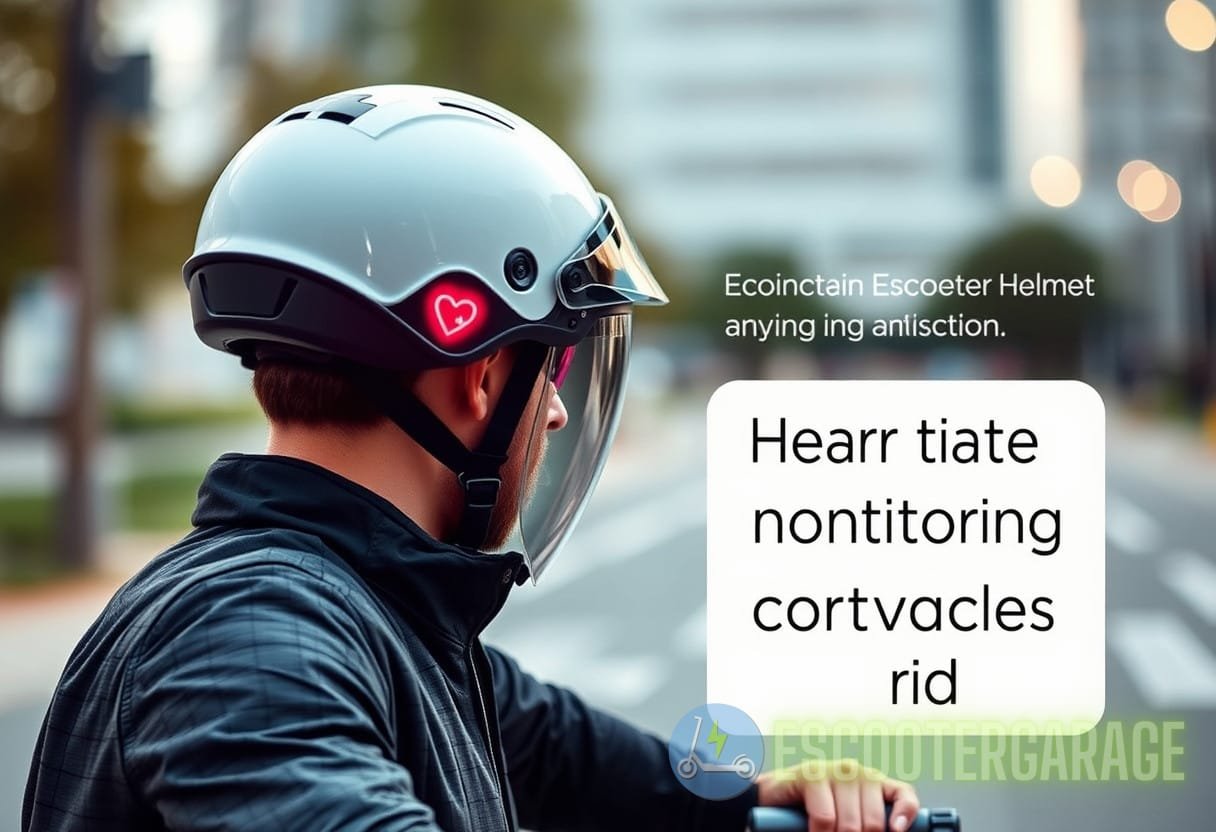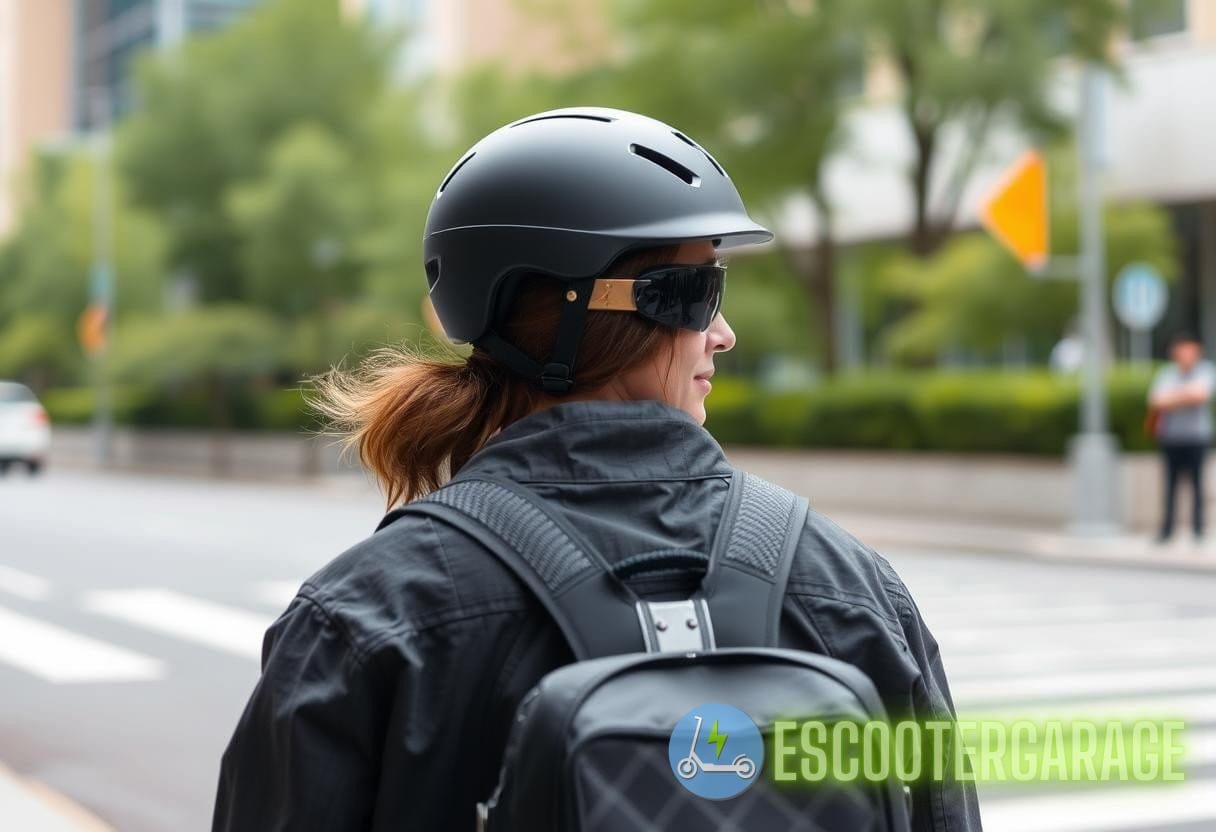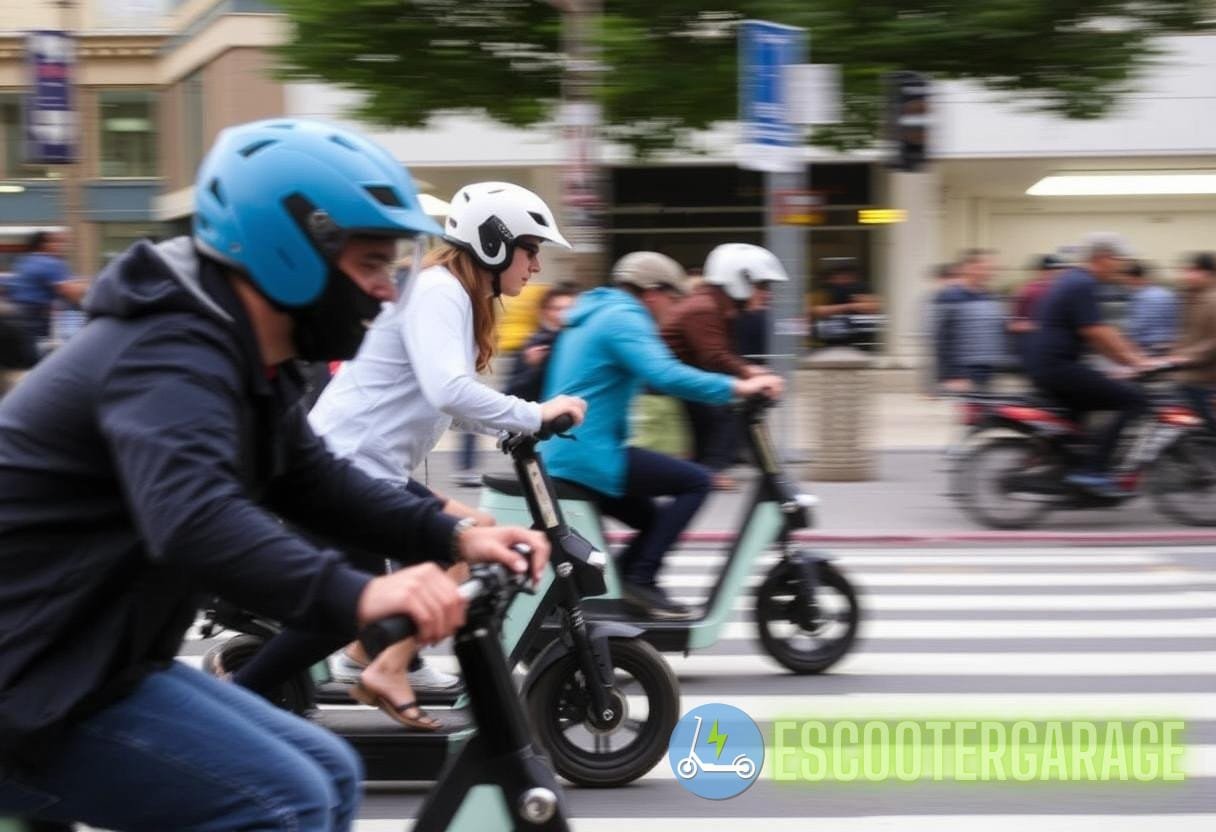Introduction to Biometric Helmet Safety
As urban mobility increasingly shifts towards e-scooters, safety has become a paramount concern for riders. A significant advancement in ensuring rider safety is the integration of biometric feedback into eScooter helmets, allowing for real-time health monitoring.
Understanding Biometric Feedback Technology
Biometric feedback technology involves the collection and analysis of physiological data to provide insights into an individual’s health status. This technology is becoming more prevalent in various sectors, including healthcare, fitness, and, most notably, in the design of innovative safety gear like helmets used for e-scooter riding.
Key Components of Biometric Feedback Systems
The integration of biometric feedback systems in helmets includes several key components:
- Heart Rate Monitors: These devices detect the rider’s heart rate, which can indicate stress or physical exertion levels.
- Body Temperature Sensors: Effective in identifying fevers or heat-related illnesses, these sensors help in assessing overall health.
- Motion Sensors: They facilitate tracking the rider’s movement patterns, which can be crucial in identifying falls or sudden impacts.
- GPS Trackers: Not only provide location data for navigation, but they can also be instrumental in pinpointing accidents.
The Intersection of Biometric Data and Safety
The combination of e-scooter usage and biometric helmet safety enhances riders’ well-being. Here’s how:
Preventing Accidents Through Early Detection
Biometric systems can detect anomalies in a rider’s physiological conditions that may indicate imminent problems. For instance:
- A sudden increase in heart rate may suggest a stressful situation or panic, alerting the rider to take a break.
- Significant changes in body temperature can preemptively signal dehydration or overheating, prompting the rider to hydrate or rest.
By closely monitoring these parameters, biometric helmets serve as proactive safety devices, potentially preventing accidents before they occur. This preventive mechanism positions biometric helmet safety as a critical aspect of personal security while riding e-scooters.
Impact on Emergency Response
In the unfortunate event of an accident, the immediate availability of biometric data can significantly improve emergency response efforts. Biometric feedback mechanisms can automatically relay crucial health information to emergency services, such as:
- Current heart rate and blood pressure, helping paramedics gauge the rider’s physical state.
- Location tracking facilitates swift access to the scene of the accident.
This integration ultimately enhances survival rates and recovery outcomes, underscoring the importance of adopting biometric helmet safety protocols.
Real-World Applications of Biometric Helmet Safety
Numerous companies are pioneering the development of biometric helmets specifically designed for e-scooter riders. Noteworthy examples include:
Case Study: Lumos Helmet
The Lumos helmet exemplifies innovation in the field of e-scooter safety. Equipped with built-in lights, turn signals, and a motion sensor, the Lumos helmet is engineered for visibility while riding. Moreover, the helmet integrates biometric feedback technology that includes:

- Heart rate monitoring capabilities.
- Fall detection systems connected to an app, enabling users to alert contacts in case of an accident.
This combination not only increases safety during rides but also enhances the overall riding experience.
Research and Development in Biometric Safety
Ongoing research continues to yield transformative advancements in e-scooter helmet design. According to a 2023 study published in PubMed Central, integrating biometric measures such as heart rate monitoring into wearables could reduce accident-related fatalities by 20%. Major universities and companies are collaborating on projects that explore the feasibility and effectiveness of these biometric systems.
Challenges and Considerations
While biometric helmet safety offers significant advantages, some challenges must be addressed:
Technology Limitations
Biometric technologies, while advanced, can be limited by issues such as:
- Battery Life: Continuous monitoring can drain battery life, necessitating efficient energy solutions.
- Accurate Data Collection: The reliability of sensors is paramount in ensuring data accuracy and user trust.
Privacy Concerns
Another considerable concern regarding biometric helmet safety revolves around data privacy. The capturing and transmission of personal health metrics raise questions about who has access to this data and how it will be utilized. Establishing clear policies and regulations is essential to mitigate privacy issues while maximizing safety benefits.
Future Perspectives on Biometric Helmet Safety
Looking to the future, the potential for biometric helmet safety remains vast as technology advances. Some anticipated trends include:
Integration with Smart City Infrastructure
Future biometric helmets could interact with smart city frameworks, communicating with traffic signals, other vehicles, and emergency services. This integration would create a more connected ecosystem, enhancing overall safety for all road users, including e-scooter riders.
Customization and Personalization
As technology becomes more accessible, riders may be able to customize their biometric feedback features. This could allow them to choose specific health metrics they wish to monitor during rides, empowering users to manage their health proactively while enjoying e-scooter rides.
Conclusion: The Imperative of Adoptive Biometric Safety Measures
Integrating biometric feedback into eScooter helmets represents a pivotal advancement in personal safety. Highlighting its capability to prevent accidents, improve emergency responses, and enhance overall riding experiences proves that biometric helmet safety is not just a technological curiosity but a vital component of modern urban mobility safety strategies.
For additional information about the importance of helmet safety, visit our article on Helmet Safety Measures.
To explore more on advancements in transportation safety technologies, check out Transportation Safety Technologies.



